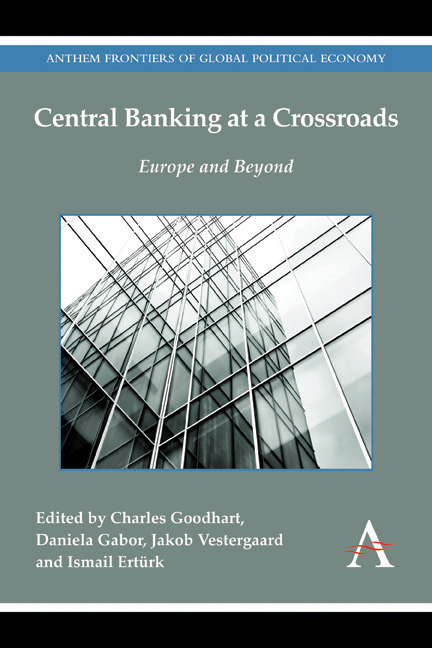Book contents
- Frontmatter
- CONTENTS
- Preface
- 1 Introduction
- Part 1 Bank Capital Regulation
- Part 2 Bank Resolution
- Part 3 Central Banking with Collateral-Based Finance
- 9 Collateral and Monetary Policy
- 10 The ECB and the Political Economy of Collateral
- 11 The Backstory of the Risk-Free Asset: How Government Debt Became “Safe”
- Part 4 Where Next for Central Banking?
- List of Contributors
- Index
11 - The Backstory of the Risk-Free Asset: How Government Debt Became “Safe”
from Part 3 - Central Banking with Collateral-Based Finance
Published online by Cambridge University Press: 05 December 2015
- Frontmatter
- CONTENTS
- Preface
- 1 Introduction
- Part 1 Bank Capital Regulation
- Part 2 Bank Resolution
- Part 3 Central Banking with Collateral-Based Finance
- 9 Collateral and Monetary Policy
- 10 The ECB and the Political Economy of Collateral
- 11 The Backstory of the Risk-Free Asset: How Government Debt Became “Safe”
- Part 4 Where Next for Central Banking?
- List of Contributors
- Index
Summary
I. Introduction
Collateral has since antiquity been used as a safeguard for contractual obligations, such as debt. But how did debt, and in particular government debt, itself become the most common form of collateral in the financial system? In other words, how did government debt become “safe”? The safety of sovereign debt corresponds to the establishment of sovereign creditworthiness: from sovereign bonds being charged a significantly higher interest rate than commercial loans in the Middle Ages to circulating “unsecured”—that is, no longer requiring additional security in the form of either collateral or a high interest rate but trading merely on “full faith and credit.” As such, sovereign safety has underwritten the rise of collateral-based finance in the twentieth century and plays a crucial role both for financial lubrication and financial stability.
Premised on the government's power to tax and print money, modern finance theory and standard economics have treated the safety of sovereign debt as an assumption that has been fundamental to the main pricing models for stocks and derivatives in the form of the risk-free asset. Economic history at the same time, however, tells us that “there is no such thing as a perfectly safe sovereign” even if the “whole development of capitalist institutions can be seen as a succession of attempts at addressing the problem of the production of safe assets” (Flandreau 2013, 24). Safety, as Alberto Giovannini, advisor to the European Commission from 1996–2010, notes, “is, of course, a relative concept, being determined by human perceptions” (2013, 3). How can one make sense of both these stories: sovereign safety as an axiom of modern finance as well as its historical contingency, relativism, and dependency on perception?
Much can be learned in this regard from the vantage point of the “increased questioning of sovereign debt representing a genuine risk-free rate” (BlackRock 2011a) that has spread in the wake of the sovereign debt crisis.
- Type
- Chapter
- Information
- Central Banking at a CrossroadsEurope and Beyond, pp. 177 - 188Publisher: Anthem PressPrint publication year: 2014



